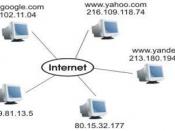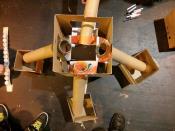The Art of Subnetting In a desperate attempt to conform to the monotony of subnetting, I realized that it consists of a series simple of mathematical equations. One must understand the concept of binary conversions and effortless algebra. For example, the IP address (which is an address that resides at the 3rd layer of the OSI model) is presented in dotted decimal format. Simply, the eight digits in an octet (hence the name octet) are too long to write out. Moreover, there is room for err in the aforementioned procedure. The IP address: 176.5.0.0 is 10110000.00000101.00000000.00000000 in its true form. The first two octets are the Network portion since this is a class B IP address and the last two octets are representing the host portion.
The subnet mask is an interesting deity in its own rite. Without the Subnet Mask, subnetting a network address would be impossible.
You can say that the Subnet Mask is the key to the whole operation. The Subnet Mask 255.255.192.0 tells you a variety of things. For instance, you can see where to increment the network address and see the amount to increment. The Subnet Mask also tells you how many usable hosts you will have once you have subnetted, and how many usable subnets. This is where the simple algebraic equations come into play. I know that 2n-2 is used to calculate both desired results.
v To calculate the usable hosts, simply replace the n with the amount of 0s in the in the complete host portion of the Subnet Mask v To calculate the usable subnets, you must replace the n with the amount of 1s in the host portion of the Subnet Mask.
v To calculate the increment, subtract the value of the last non-zero octet in the...


